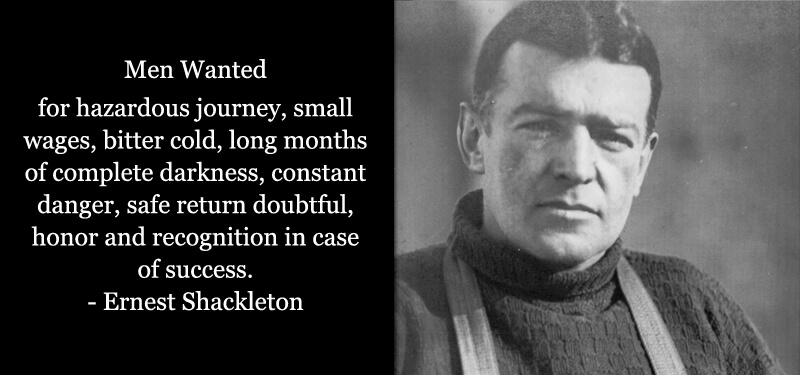 Who was Ernest Shackleton and what does he have to do with Antarctica?
Who was Ernest Shackleton and what does he have to do with Antarctica?
After moving to London with his family Shackleton joined the merchant navy and qualified as a master mariner before being chosen to go on an Antarctic expedition aboard the ship ‘Discovery’. The expedition was led by British naval officer Robert Falcon Scott and the team consisted of Scott, Shackleton and English physician Edward Wilson. The expedition was the first official British exploration of the Antarctic regions since James Clark Ross’s voyage sixty years earlier and the voyage became a landmark in British Antarctic exploration history. Unfortunately, as the team trekked towards the South Pole in extremely perilous conditions Shackleton became seriously ill and had to return home. The team eventually managed to get closer to the South Pole than anyone had come before and despite Shackleton’s premature departure from the expedition he gained invaluable experience that would help him in his future forays into this still mysterious land.
It took Shackleton 7 years to return to return to Antarctica, and this time he was to be the leader of his own expedition, the first of 3 expeditions he would lead. The target of this expedition was again to be the first to reach the South Pole and although this wasn’t achieved the team set a new record for coming closer than ever before, along with climbing Mount Erebus and making many important scientific discoveries. The largely underfunded expedition turned Shackleton into a public hero and upon his return to Britain he was knighted by King Edward V11.
The “Shackleton Route”
Within 3 years Norwegian explorer Roald Amundsen surpassed Shackleton’s record and reached the South Pole, consequently leading to Shackleton deciding to focus on crossing Antarctica from sea to sea, via the pole, a voyage which is still taken to this day as part of Antarctica cruises aboard luxurious expedition ships that Shackleton would have barely believed possible. This desire to follow this route led to the often fabled and renowned “Imperial Trans-Antarctic Expedition” which set off in 1914 and ended in disaster when Shackleton’s ship “Endurance” became trapped in pack ice and was slowly crushed. The crew managed to escape by camping on the sea ice until it disintegrated, before setting off on 3 small lifeboats, eventually reaching Elephant Island. From here Shackleton gathered 5 of his team members and set off to find help. In one small boat the 6 men spent 16 days crossing 1,300 km of ocean to reach South Georgia and then trekked across the island to a whaling station where Shackleton was able to arrange the safe rescue of every member of his team.
Although beaten to the record of being the first expedition to reach the South Pole his legacy has gone down in folklore and cemented Shackleton as a symbol of true leadership – a man who kept his team together in a survival story which can only be described as remarkable.
Shackleton route expeditions are now incredibly popular. These luxurious voyages illuminate Shackleton’s legend and recount these courageous explorations of Antarctica.
In 1921 Shackleton returned to the Antarctic for what would be his final time. On January 5 1922, while his ship was moored in South Georgia, Shackleton suffered a fatal heart attack. At the bequest of his wife he was buried on South Georgia and his final resting place has become a particularly poignant point of call for today’s Antarctic visitors who come to pay tribute to the man who loved Antarctica as much as Antarctica now loves him.
Contact Wildfoot for more information on Shackleton Route cruises.
